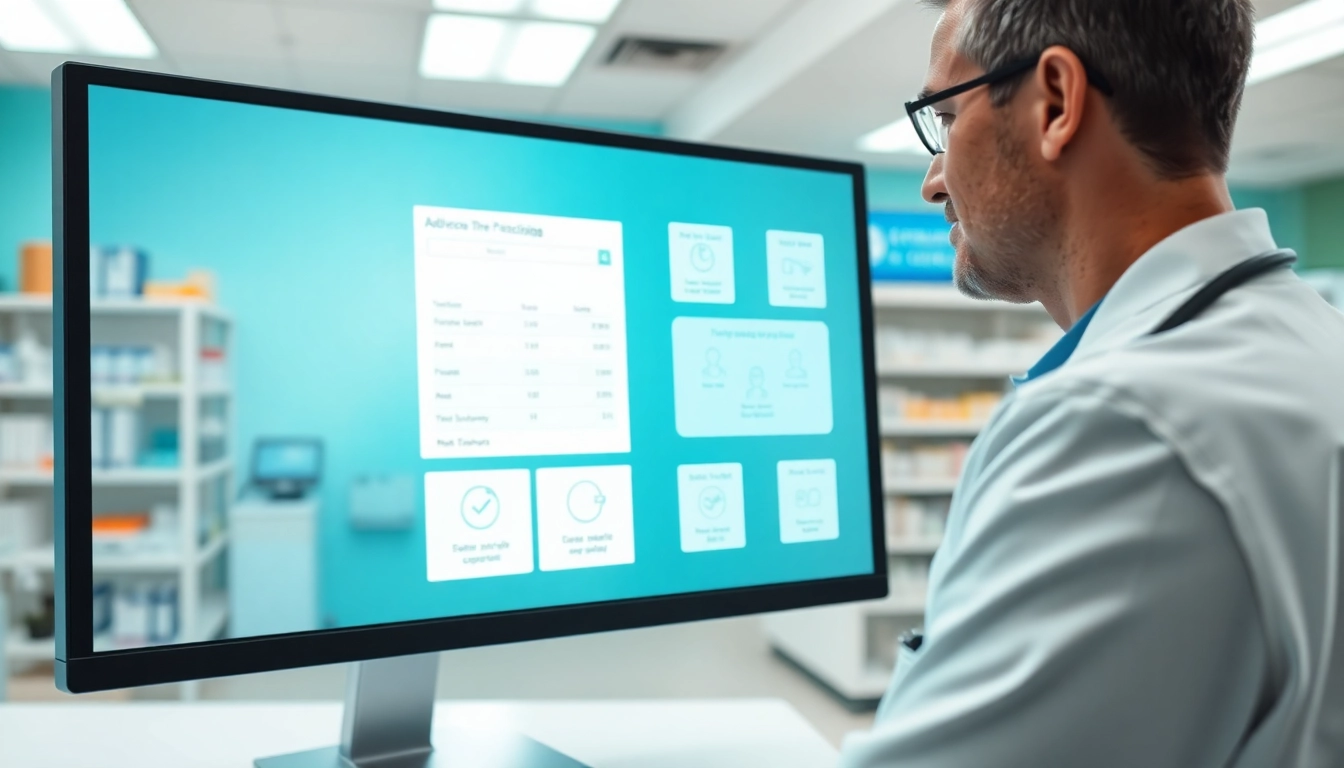Understanding Eprescribing Software
What is Eprescribing Software?
Eprescribing software is a digital solution that allows healthcare providers to create, manage, and send prescriptions electronically. This innovative approach has transformed the traditional paper-based prescription process, making it more efficient, accurate, and secure. By enabling providers to transmit prescriptions directly to pharmacies, eprescribing software minimizes the risk of errors that can occur with handwritten prescriptions. It streamlines the prescription workflow, ensuring that patients receive their medications promptly and without confusion.
Importance of Eprescribing Software in Healthcare
The importance of eprescribing software in today’s healthcare landscape cannot be overstated. It plays a critical role in enhancing the overall quality of care. By integrating features of eprescribing software into clinical practices, healthcare providers can achieve improved patient outcomes, better medication adherence, and greater efficiency within healthcare systems. Eprescribing helps to reduce prescription errors, a common issue that can lead to adverse drug reactions and serious health complications.
How Eprescribing Software Works
Eprescribing software operates through a straightforward workflow. When a healthcare provider determines a patient’s needs for medication, they can select the appropriate drug from a digital formulary. Once selected, the prescription is electronically generated and transmitted to the patient’s preferred pharmacy. The pharmacy receives real-time notification and can prepare the medication for pickup or delivery. Additionally, the software often includes features like medication history access, drug interaction checks, and automated refill requests, providing a comprehensive suite of tools that support safe and efficient prescribing.
Core Features of Eprescribing Software
Electronic Prescription Transmission
One of the hallmark features of eprescribing software is electronic prescription transmission. This functionality allows providers to send prescriptions directly to pharmacies in real-time, which significantly reduces wait times for patients. By eliminating the need for physical paper prescriptions, providers can ensure that prescriptions are legible and accurate, thereby reducing the likelihood of medication errors. This feature also supports compliance with healthcare regulations, such as the Electronic Prescribing of Controlled Substances (EPCS), enabling providers to prescribe controlled substances electronically safely.
Patient Medication History Access
Accessing a patient’s medication history is another critical feature of eprescribing software. Providers can view the patient’s current and past medications, allergies, and any adverse drug reactions. This comprehensive view facilitates informed decision-making, helping providers avoid potential medication errors and manage drug interactions effectively. Moreover, having this information at their fingertips enhances the clinician’s ability to conduct a thorough medication reconciliation, a process vital for patient safety.
Drug Interaction Alerts and Safety Checks
Drug interaction alerts are essential safety features within eprescribing software. These alerts notify healthcare providers of potential interactions between the prescribed medications and any other medications the patient is taking. By actively alerting providers to these risks, the software significantly enhances patient safety. Additionally, safety checks can include alerts related to allergies, appropriate dosing guidelines, and prescription duplications, further safeguarding patients against errors and adverse reactions.
Benefits of Using Eprescribing Software
Improved Prescription Accuracy
The utilization of eprescribing software leads to improved prescription accuracy. Traditional handwritten prescriptions are often deciphered incorrectly by pharmacists, resulting in medication errors. In contrast, digital prescriptions are automatically generated and are free from hand-writing ambiguities. Electronic prescriptions can also include essential details, such as dosage and administration instructions, reducing the chances of misunderstandings during the dispensing process.
Enhanced Patient Safety
Patient safety is greatly enhanced through the use of eprescribing software. With features like drug interaction alerts, allergy checks, and access to comprehensive medication histories, healthcare providers are better equipped to make safe prescribing decisions. This proactive approach to medication management minimizes the risk of adverse drug events and hospital readmissions, ultimately leading to better patient outcomes and reduced healthcare costs.
Streamlined Clinical Workflows
Eprescribing software streamlines clinical workflows by reducing administrative burdens associated with traditional prescription practices. Tasks such as writing, faxing, or phoning in prescriptions are eliminated, allowing healthcare providers to focus more on patient care. Furthermore, the integration of eprescribing with electronic health record (EHR) systems creates a seamless workflow, where all patient information is housed in one platform. This level of integration improves overall efficiency, supporting better care coordination among providers.
Choosing the Right Eprescribing Software
Evaluating Software Features
When selecting the right eprescribing software, evaluating the features is paramount. Each software solution may offer varying capabilities, so it’s essential to assess which functionalities align with the specific needs of your practice. Critical features to look for include automated refill requests, medication history access, built-in electronic prior authorization, and compatibility with EHR systems. Conducting a comprehensive feature analysis can lead to a more informed decision, enabling your practice to leverage the full benefits of eprescribing.
Integrating with Existing Systems
Integration with existing healthcare systems is another vital consideration when choosing eprescribing software. A seamless integration between the eprescribing solution and your current EHR will facilitate better data flow and enhance usability for your clinical staff. Ensuring that the new software is compatible with your practice’s operational workflow can prevent disruptions and maximize the potential return on investment.
Assessing User Experience
The user experience is critical in determining the effectiveness of eprescribing software. The software should be easy to navigate, with intuitive interfaces that minimize training time. Before deciding, consider obtaining feedback from the healthcare providers and administrative staff who will be using the software regularly. A product with a user-friendly design can significantly improve clinician acceptance and utilization rates, which in turn enhances patient care.
Future Trends in Eprescribing Software
Adapting to Regulatory Changes
As healthcare regulations evolve, so must eprescribing software. Future trends will likely focus on adapting features to comply with new rules regarding patient data security and interoperability. Staying proactive in understanding these changes will ensure that software solutions remain compliant and beneficial for practices. Continuous updates and enhancements in response to these regulations will support sustained improvements in patient care and safety.
Innovative Technologies in Eprescribing
Innovative technologies are set to shape the future of eprescribing software. Developments such as artificial intelligence (AI), machine learning, and telehealth integrations may play significant roles in enhancing software capabilities. AI can predict patient medication needs, while telehealth integrations allow for prescribing during virtual consultations. These advancements aim to create personalized and efficient healthcare experiences for patients and providers alike.
Enhancing Patient Engagement through Eprescribing
Enhancing patient engagement is a critical trend in the evolution of eprescribing software. Future solutions may incorporate features that allow patients to manage their prescriptions directly, such as mobile applications for prescription tracking or reminders for refills and follow-ups. Making patients active participants in their medication therapy will improve adherence and foster better health outcomes, ultimately benefiting both patients and healthcare providers.



